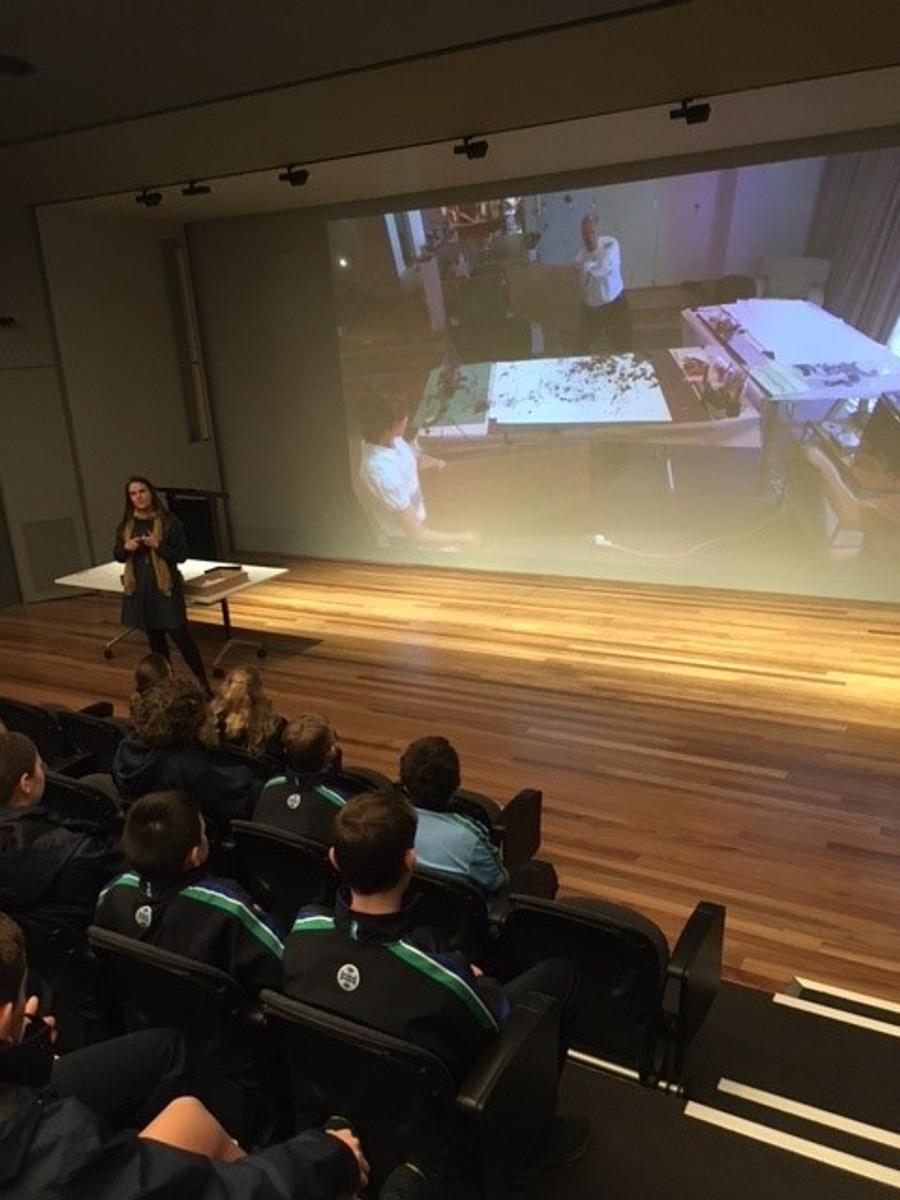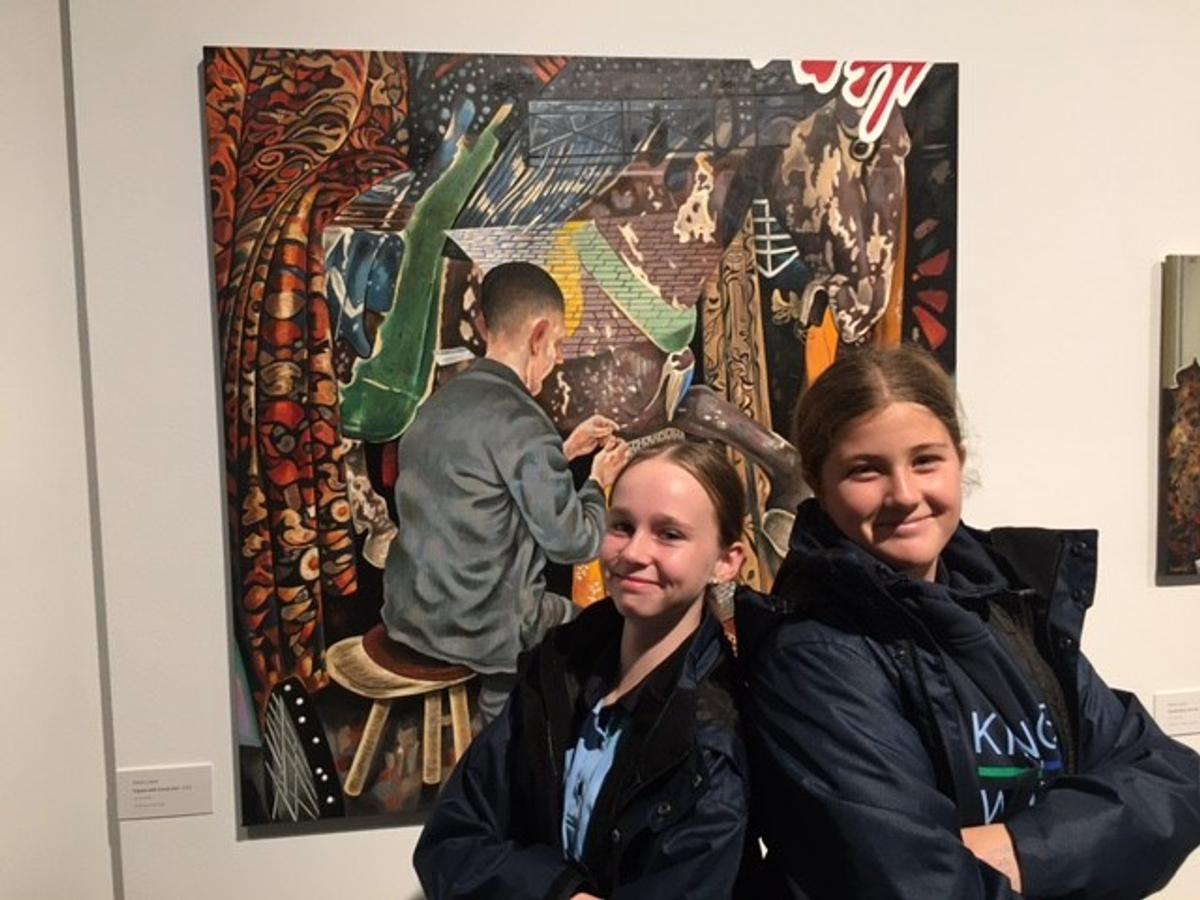Around the Senior School
Science | Geography | Duke of Edinburgh | Major Works | Reading to Write | Visual Art

Around the Senior School
Science | Geography | Duke of Edinburgh | Major Works | Reading to Write | Visual Art
Year 9 Science have constructed scientific models as part of their recent science assessment. Students selected a range of scientific concepts from each area of science using various modelling methods. Student creations included interactive digital simulations, welded and moving models of DNA, neurons, interactive lungs and tectonic plates. The library will display a sample of student work over the coming weeks.
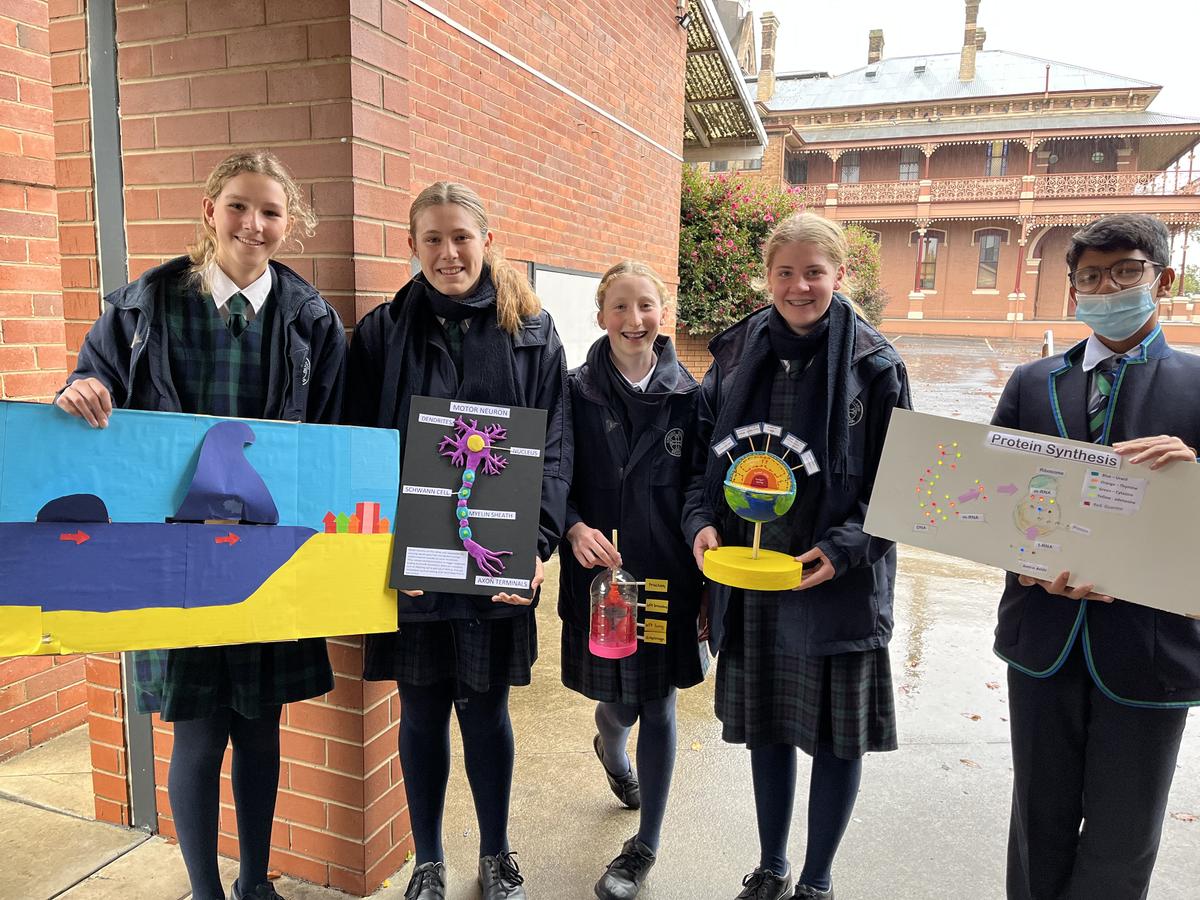
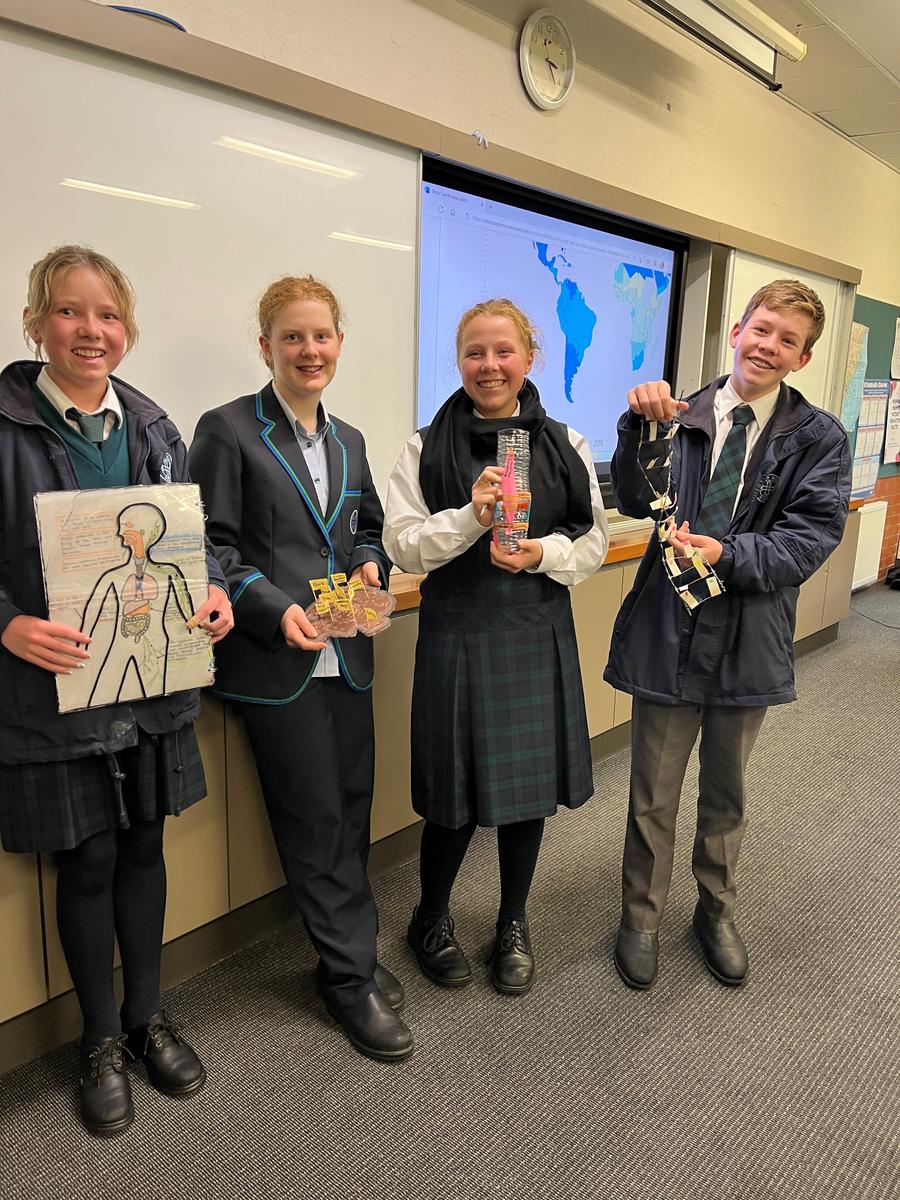


By Sally Carter and Saskia Presslaber
The Year 12 Geography classes headed to Sydney to examine urban dynamics for their HSC course. On Monday, we enjoyed a five star yum cha meal in the heart of Cabramatta. The menu consisted of chicken feet, beef tendon, dumplings, noodles and fried rice. It gave us an insight into living in Cabramatta and what a cultural hub it is.
We then ventured to China Town where we could see impacts from the covid pandemic as shops were less busy and buildings were empty.
From China Town, we walked a transect of the CBD of Sydney and analysed the urban environment and changing morphology of Sydney. We investigated the economic authority of Martin Place and accounted for the high-end retail that exists there.
Later that night, we admired the VIVID light festival which is a celebration of Sydney’s iconic landmarks. We caught a ferry from Circular Quay to Barangaroo. This was a great way to see all angles of the lights and the harbour foreshore.
After dinner we followed the harbour-side path through Barangaroo which is an area that has been transformed through the process of urban renewal and consolidation.
Tuesday morning we travelled to Pyrmont, to examine urban decay, urban renewal and urban consolidation processes on the site of the former Colonial Sugar Refinery. After this, we travelled to the Spit Bridge and had a stunning kayak through Middle Harbour.
We were very fortunate with the weather this year and want to thank our legendary role models/geography teachers: Mr Smith, Mr Callaghan and Mrs McManus for making this trip possible.
Just remember, Geography isn’t a subject, it is a lifestyle choice!
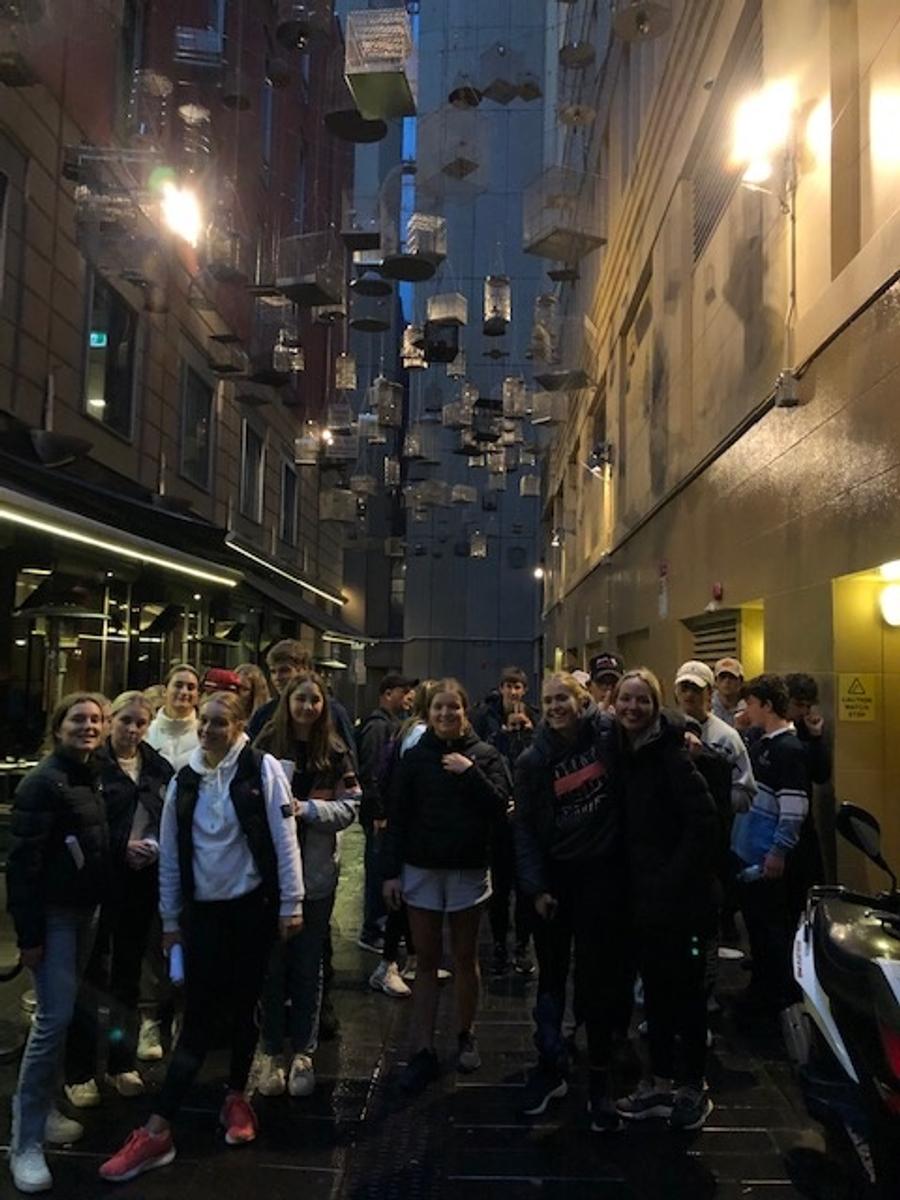
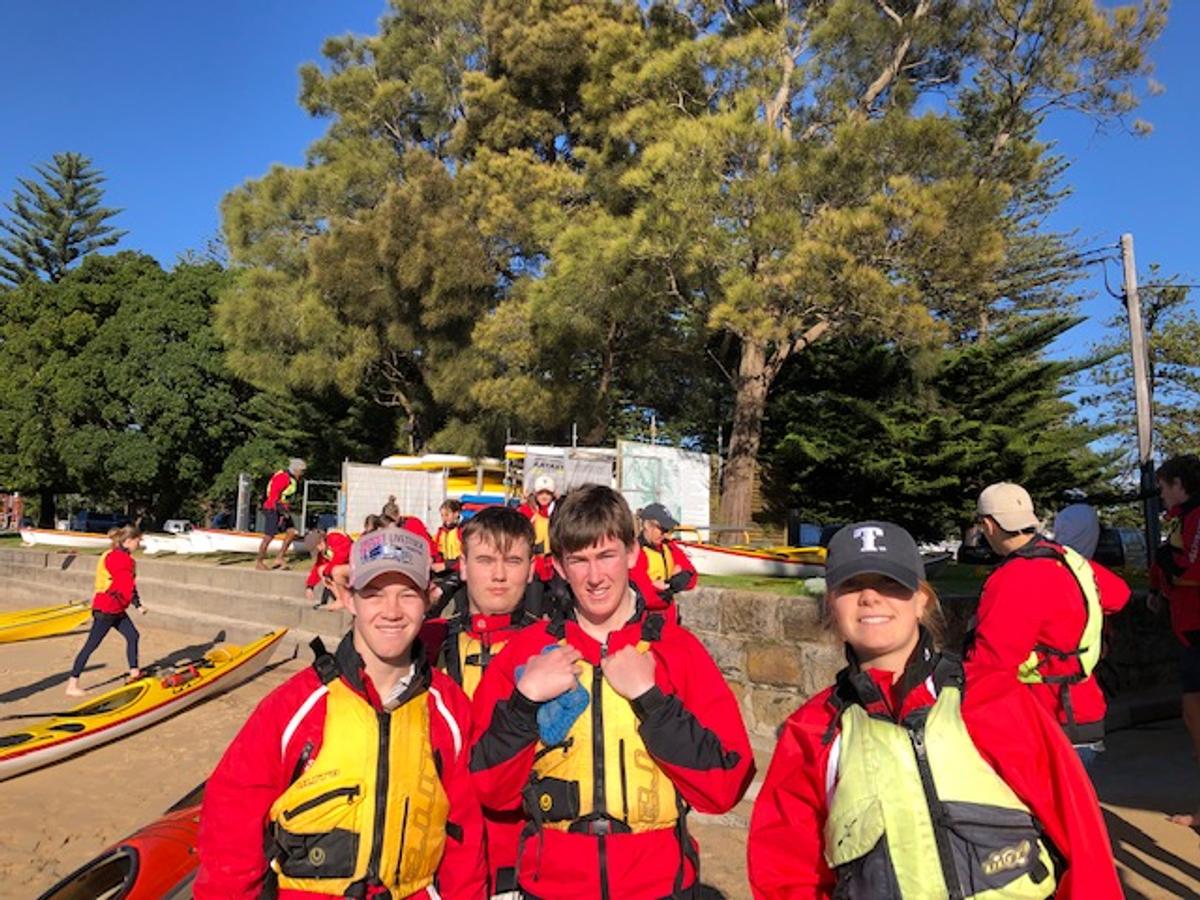


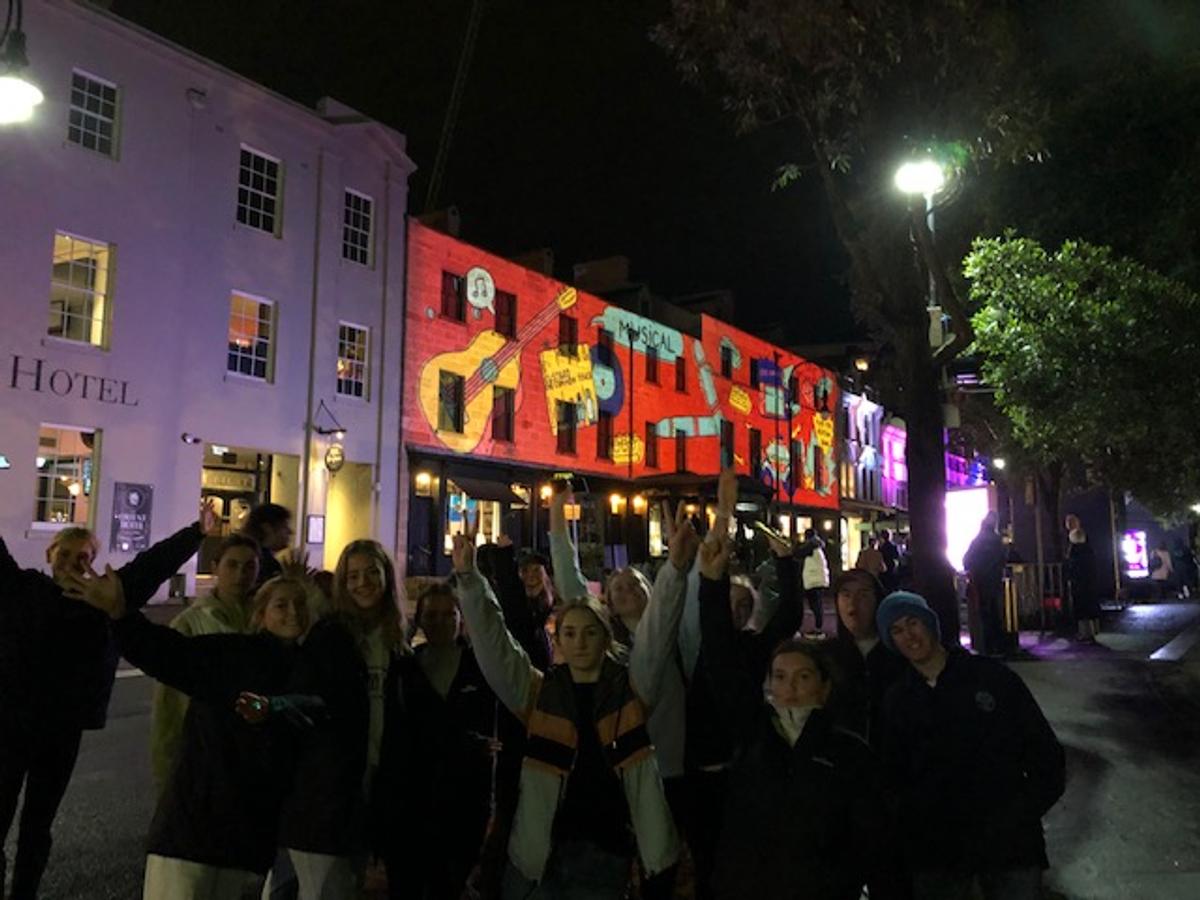
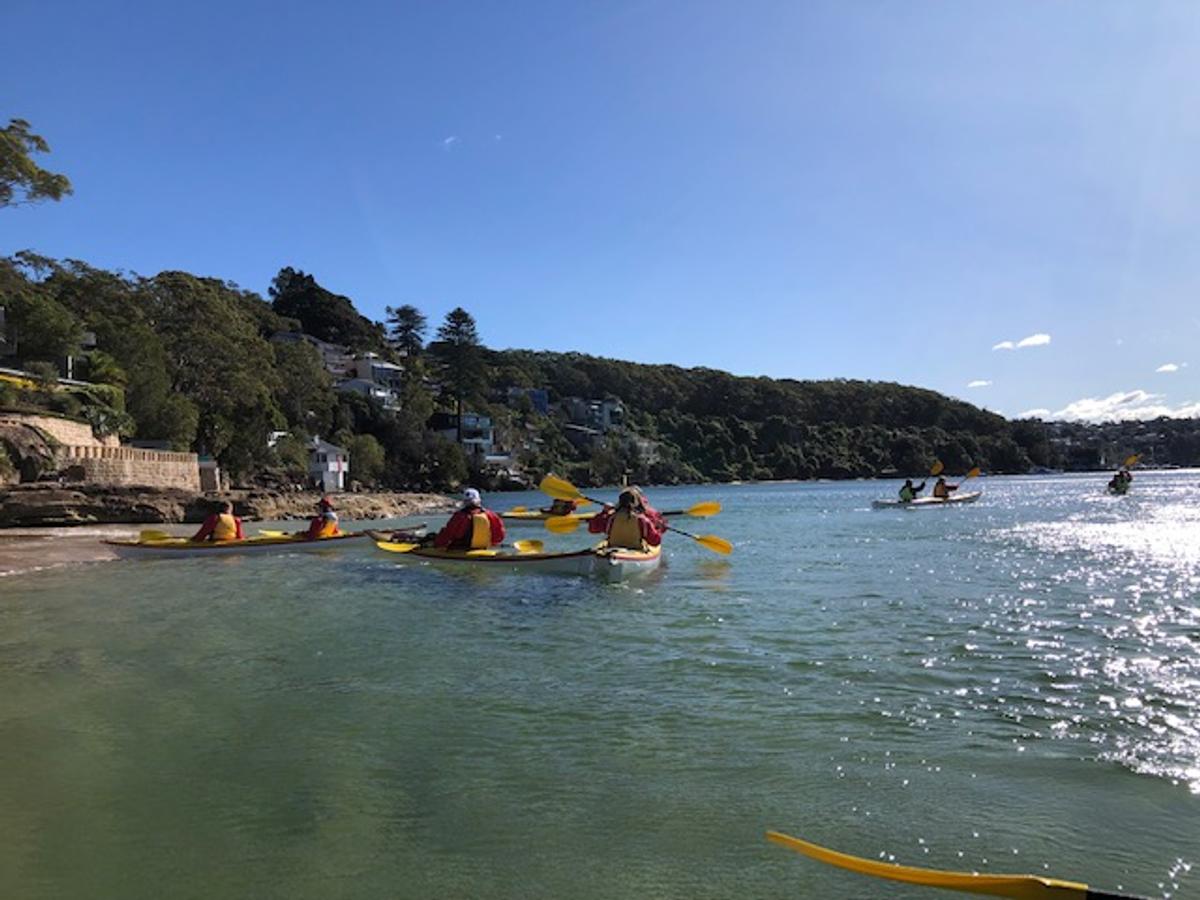

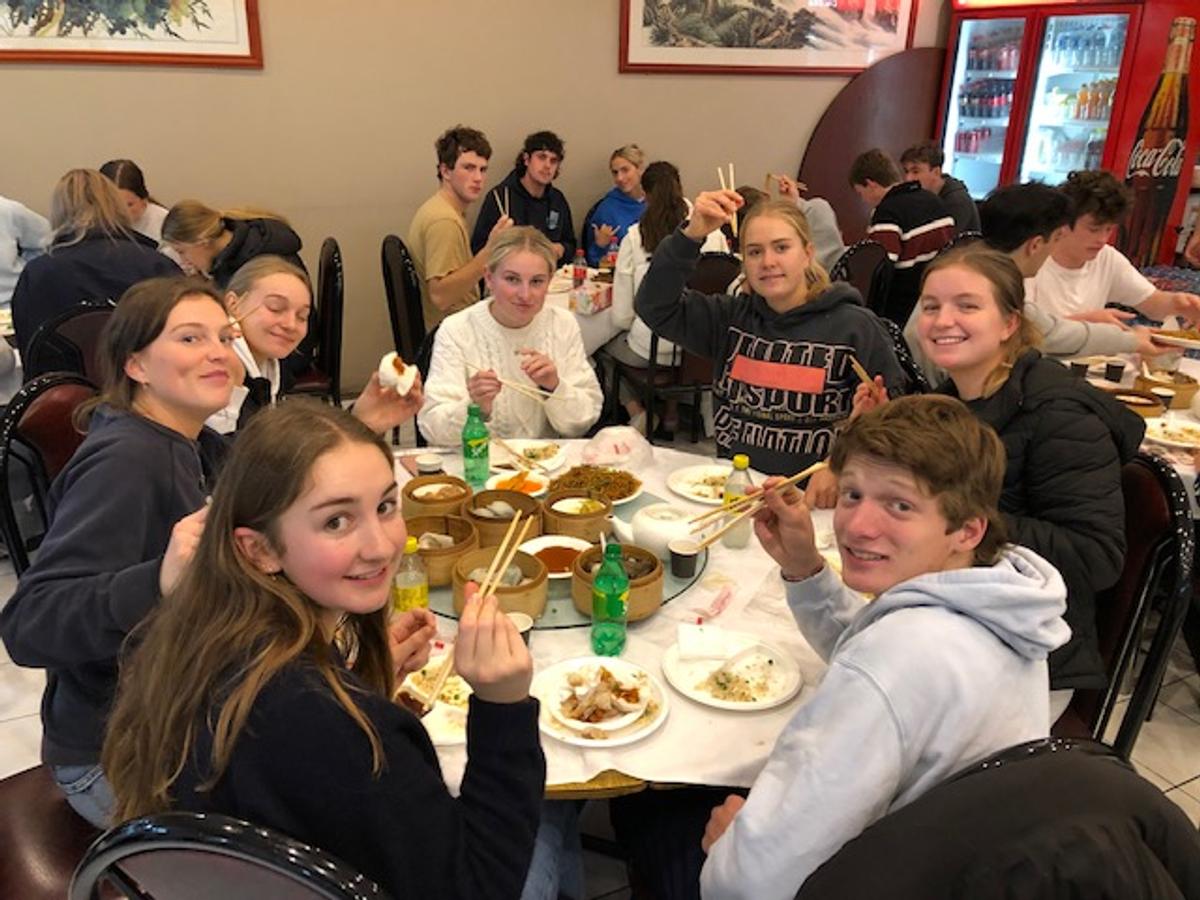
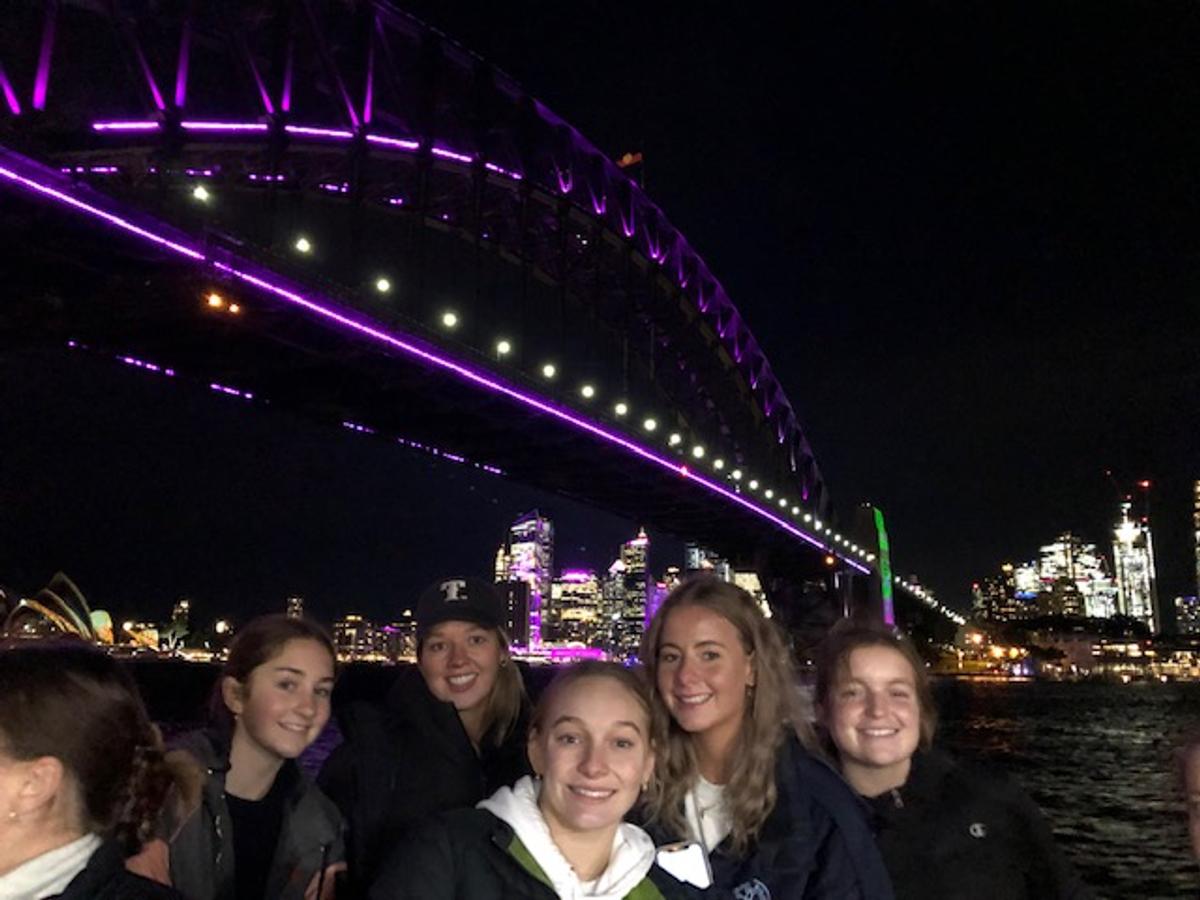
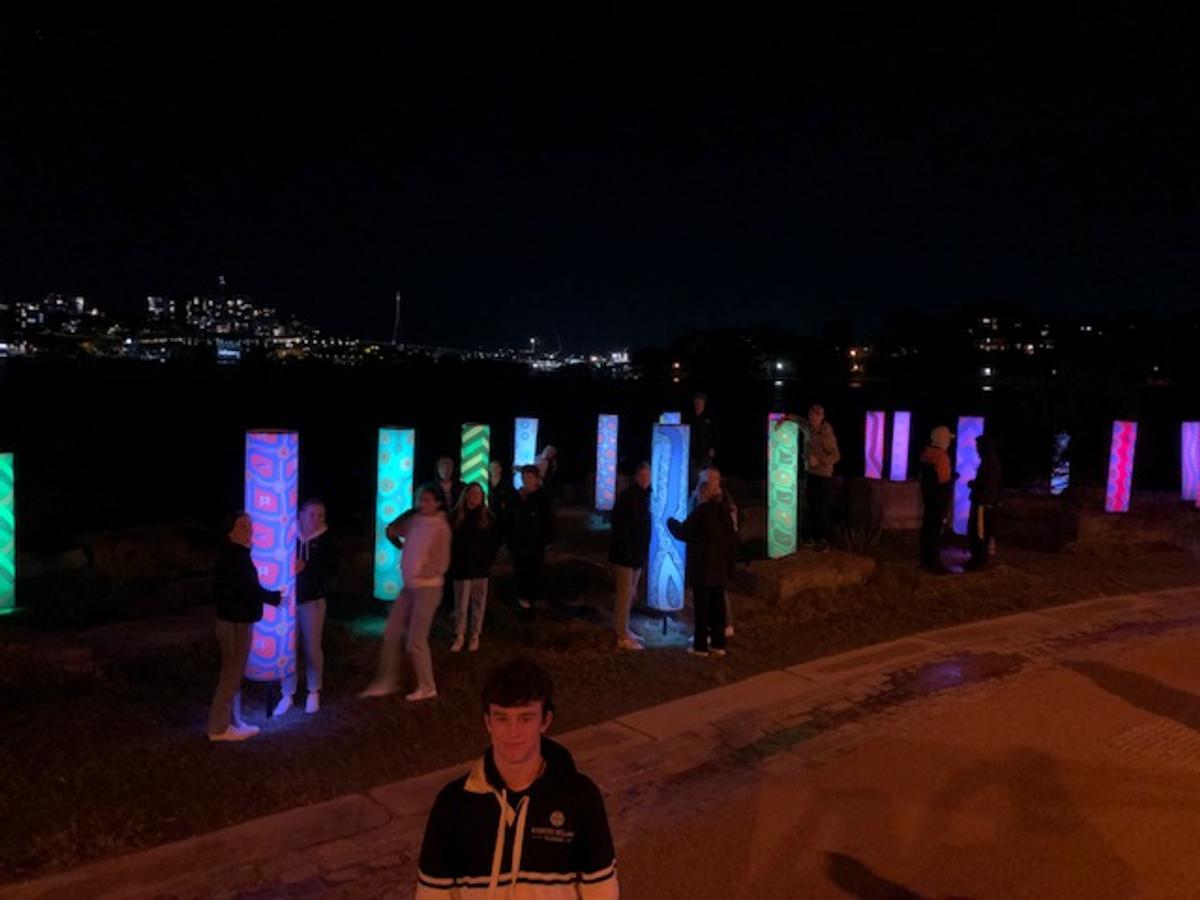










by Hannah Richardson
Duke of Edinburgh has been a fantastic journey that has challenged me taught me many life skills. I started the Duke of Edinburgh process in Year 9 completing my bronze level and then moving on to finish my silver by the end on Year 10, and my gold by the start of Year 12. You do not need to have completed the lower levels to attempt the silver or the gold however, it does reduce some of the time you have to spend working towards the higher levels. Overall, it has pushed me to reach out and obtain new life skills as well as develop intrinsic motivation and stay organised.
Duke of Edinburgh is broken into three main sections: skill, sport, and service, which you must complete for one hour a week for a certain number of weeks; this varies in accordance with the different levels. For the skill component I participated in musicals including the Adams Family, Oliver, and High School Musical; I also read novels with the goal to read a large range of books. For the sporting component I played netball and competed in rowing. And for the service component I worked at a nursing home, coached a netball team and filled a leadership position as New House captain. There is a large variety of activities you can do for each section and commitments such as Cadets, playing a musical instrument, and being part of a sporting team can all count towards the Award.
Another element to Duke of Edinburgh is the adventurous journey. Cadet camp counted for my bronze level but for silver I walked the six-foot track, from Katoomba to Jenolan Caves and for gold I completed a trail ride on horseback. The length of the journey beings at two days and one night for bronze and extends to four days and three nights for gold. This was one of my favourite parts of Duke of Edinburgh as it really pushed me out of my comfort zone. When walking the six-foot track, we climbed over 900m in elevation in half a day and when horsing riding for my gold we covered over 80 kilometres. The school also runs camps for Duke of Edinburgh to help facilitate the students' progress. Personally, I had journeys that I knew I wanted to achieve, hence mine were self-planned, but my peers have spoken positively about the school-organised trips.
Overall, I really enjoyed the experience and found that the program works well with what is already offered at School. I will be honest in saying completing the Gold Duke of Edinburgh does require time, commitment, and organisation but it certainly pays off, being an internationally recognised award. For me it was a fun program that gave me the opportunity to give back to my community and keep me busy; this improved my studies as it encouraged me to be efficient with my time and stay organised. The award is a commitment which requires dedication, organisation, and persistence. However, it is well worth it and something of which to be proud. Universities recognise this and some offer adjustment factor points which can help you get into your desired course.
Logging the award is also a simple process and I would highly recommend using the online record book. If anyone has any questions on how to complete the award or wishes to discuss options regarding their sport, service, and skill I am more than happy to help or provide some advice!

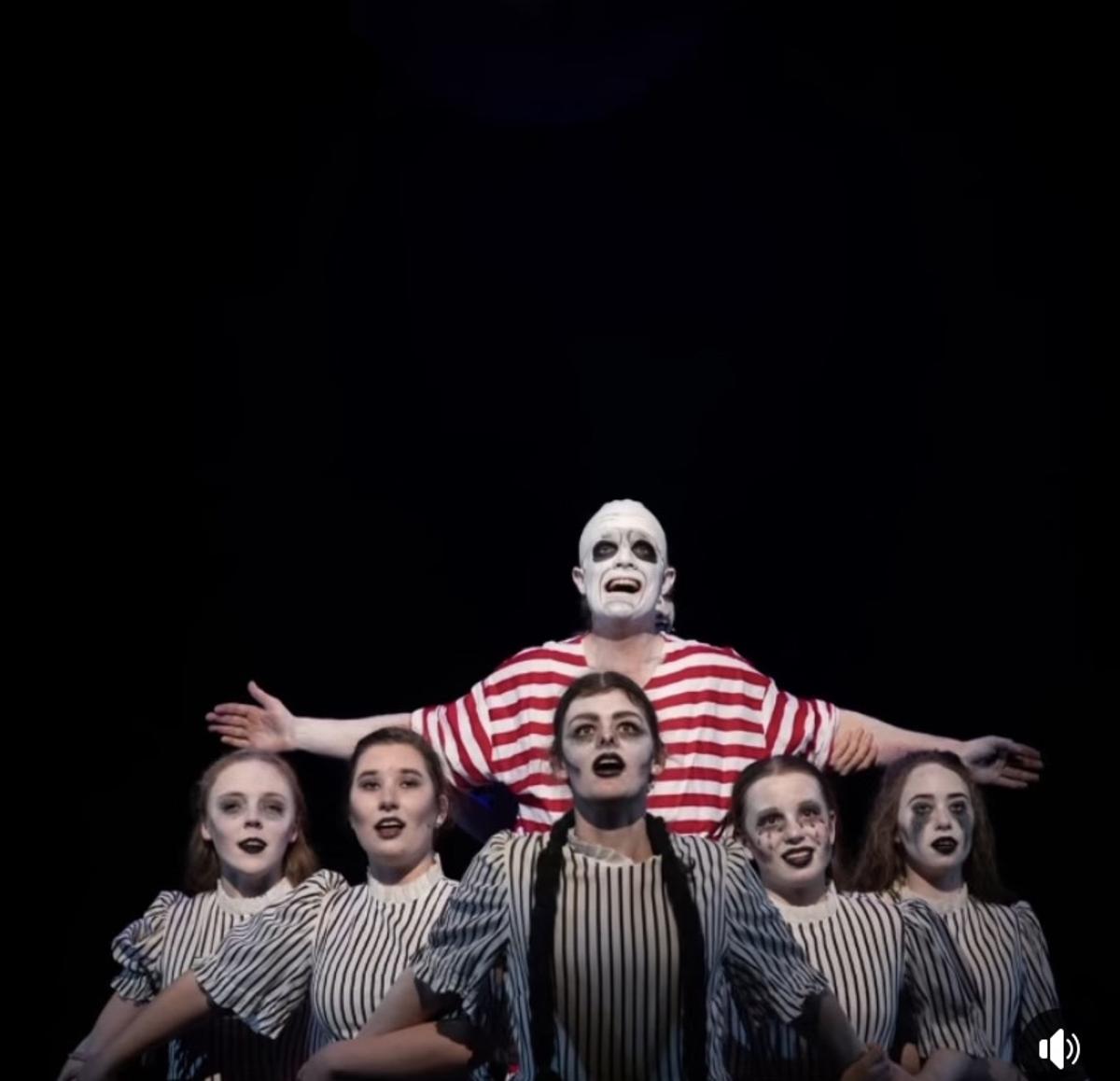
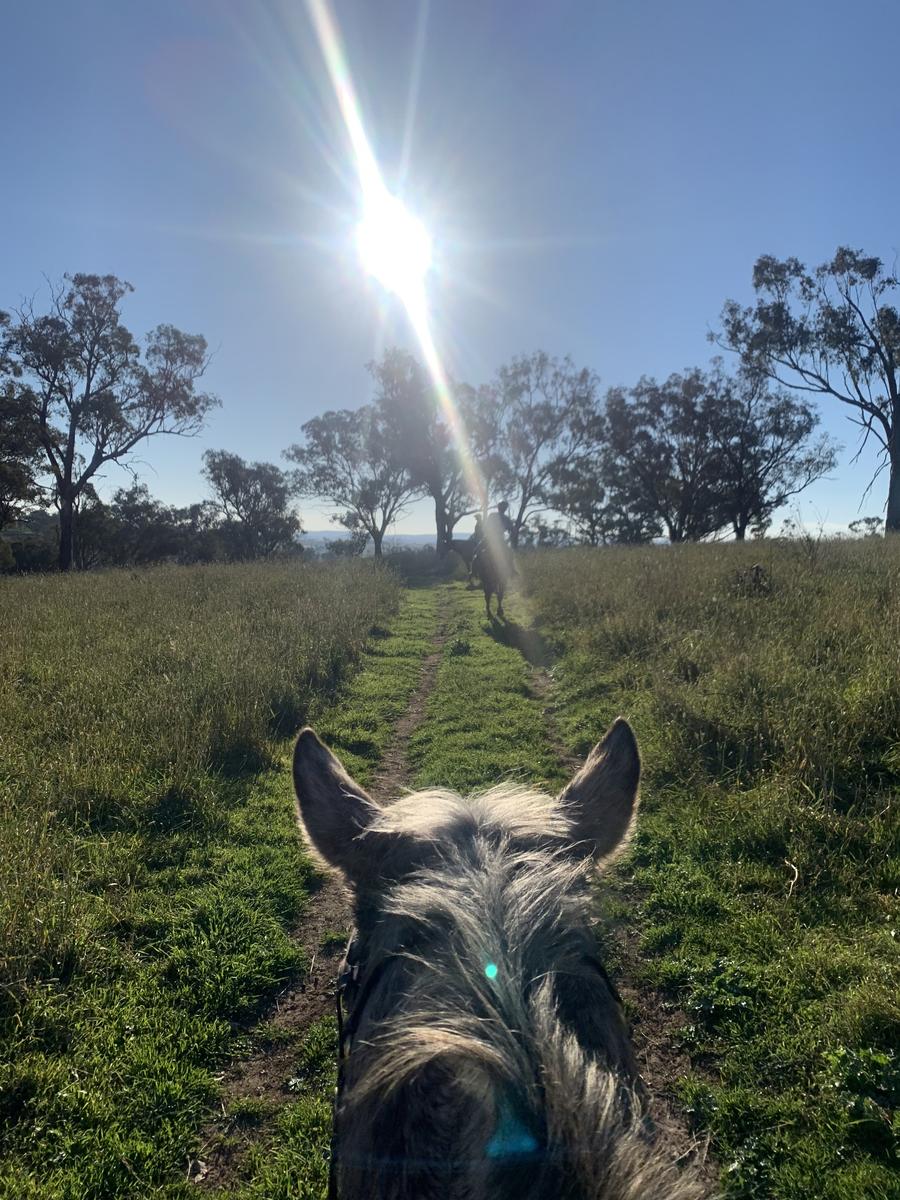
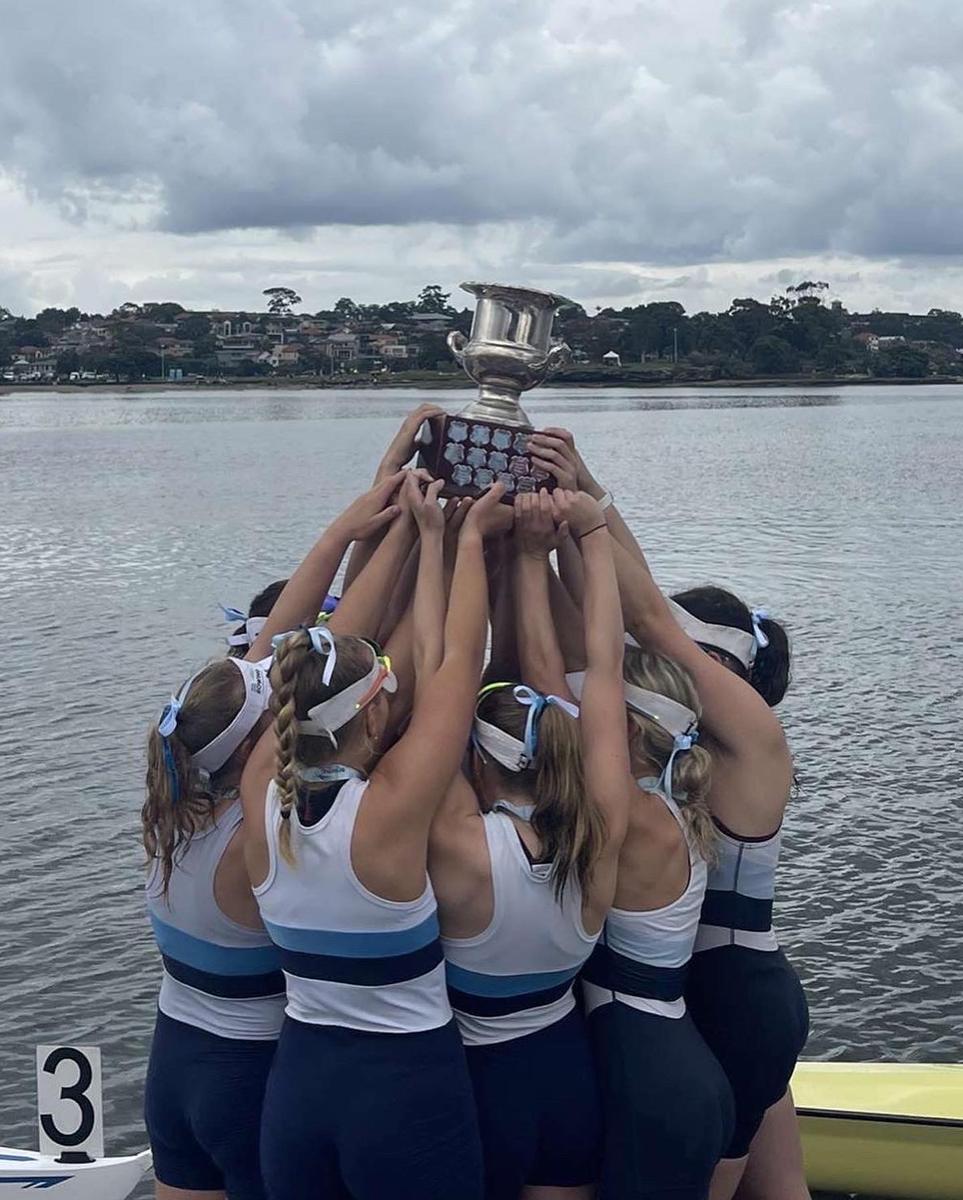
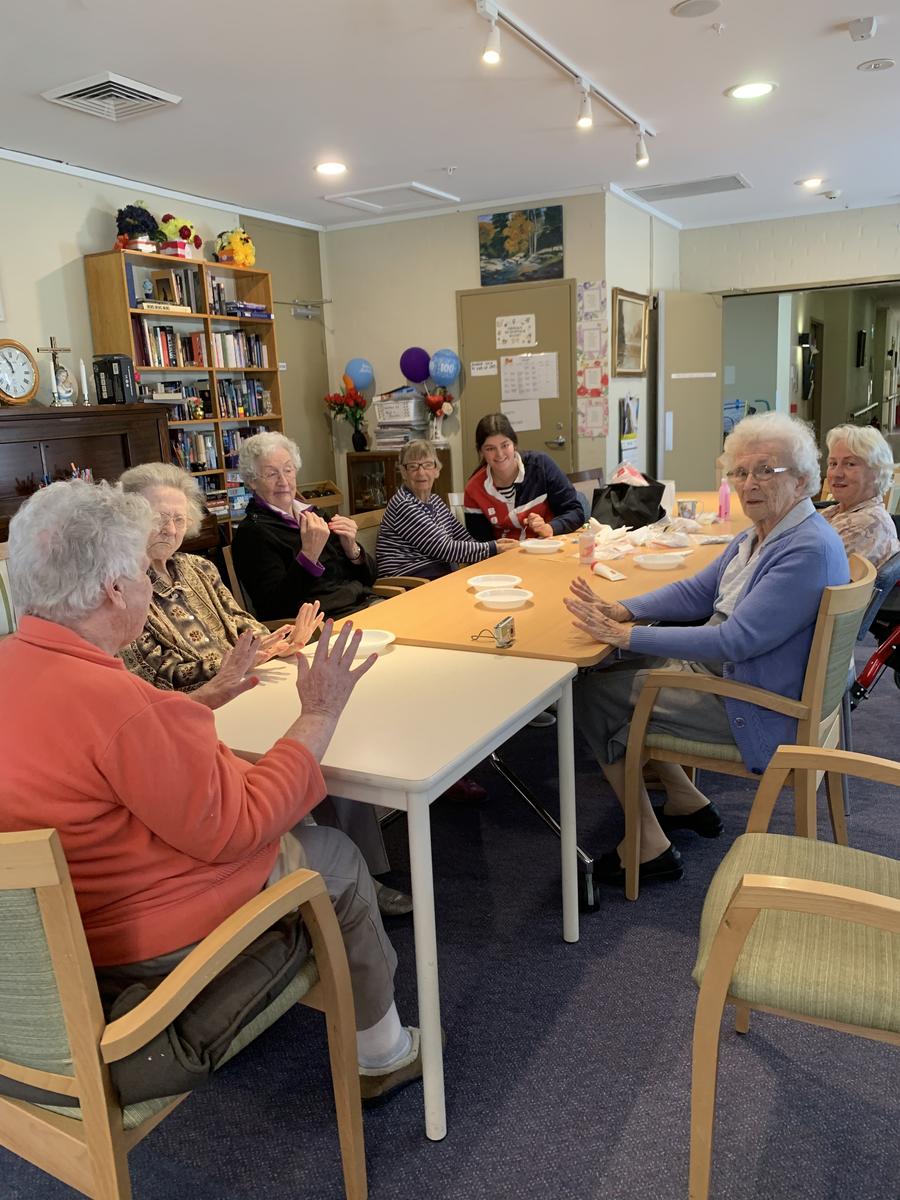







There has been a lot happening in PDHPE this Term. The theoretical component has seen Year 7 learning to be upstanders and value diversity, Year 8 has explored risk-taking behaviour and how to minimise risks while making intelligent choices, Year 9 has investigated the influences on our health, including media messages and marketing, while Year 10 have explored the idea of power in relationships and mature issues surrounding ICT.
In the practical setting, Year 7 has tested and refined their swimming ability. Year 9 has developed a greater understanding of traditional Indigenous games and developed their AFL skills, while Year 10 has been designing their own games and teaching them to their peers.
Year 8 has been doing something a little different. As part of the Year 8 Bust and Move Unit, students were tasked with choreographing their own action scene for an upcoming Hollywood blockbuster. This saw them use a theme song and multiple movements and pieces of equipment to tell a story.
Students were tasked with manipulating body, energy, space and time to demonstrate choreographic intent while participating collaboratively in a group setting.
We have included one of the performances by Rowan Baldwin, Jackson Davis, Felix Kairaitis, Toby St Clair and Fergus Whittle.
Sit back and relax as the boys take you on a journey of a midnight jewel heist and the ensuing chase in their video below.
Lights, Camera, Action!
Sam Coburn
Industrial Technology HSC Major Work
Sam's outdoor bar - bench top is pine and will have a blue epoxy resin running through the middle of it - nice metaphor on breaking the drought. The bar will be surrounded by Mini-Orb, a denser corrugated iron finish. Sam has welded the bottom frame, and stainless steel will lie over the plywood for storage underneath and shelving for glasses and jugs elsewhere . The roof will be made of corrugated iron. Sam’s portfolio diarises every step of the process and is progressing well. In its finished state, it will be 80 pages long and a mixture of written and visual text. IT is a progressive and essential subject for our future. Good luck Sam and we can’t wait to see the finished product.
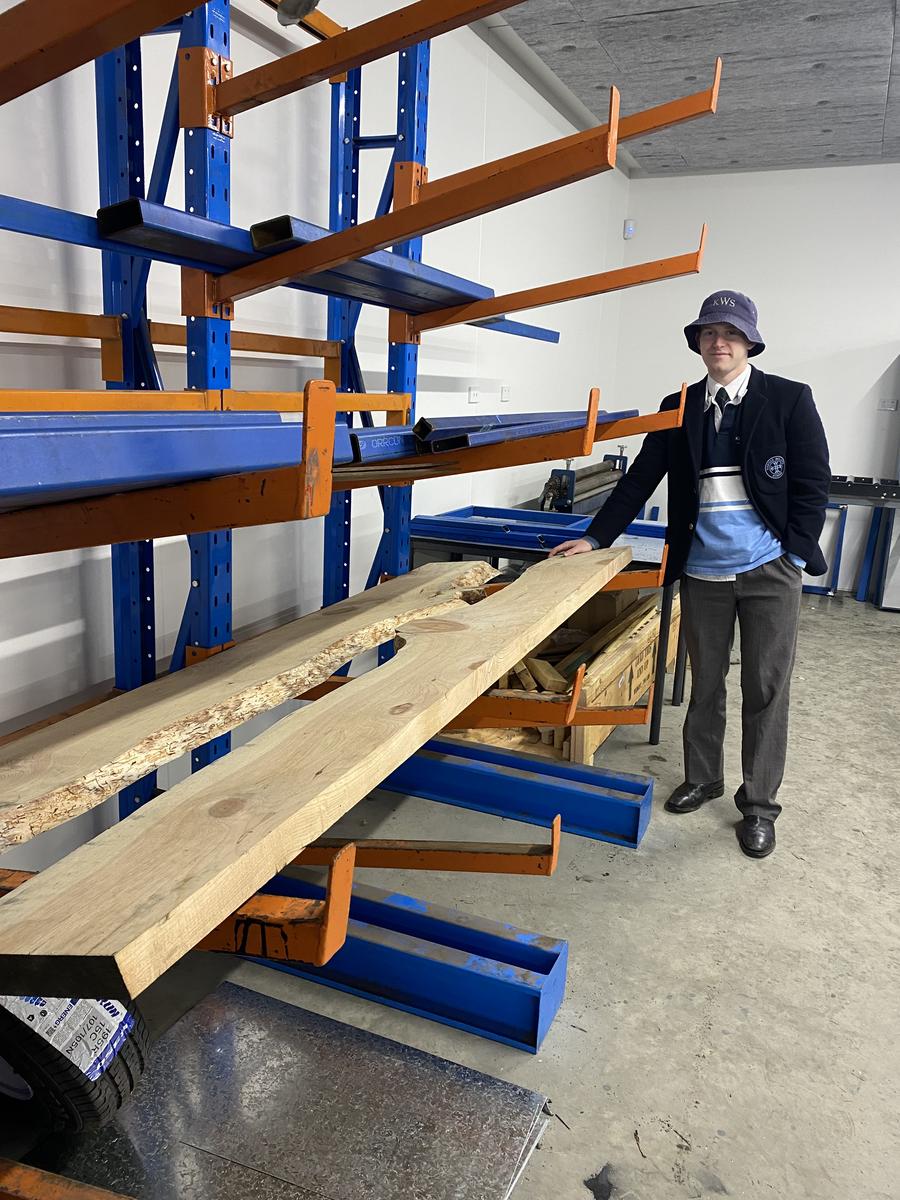
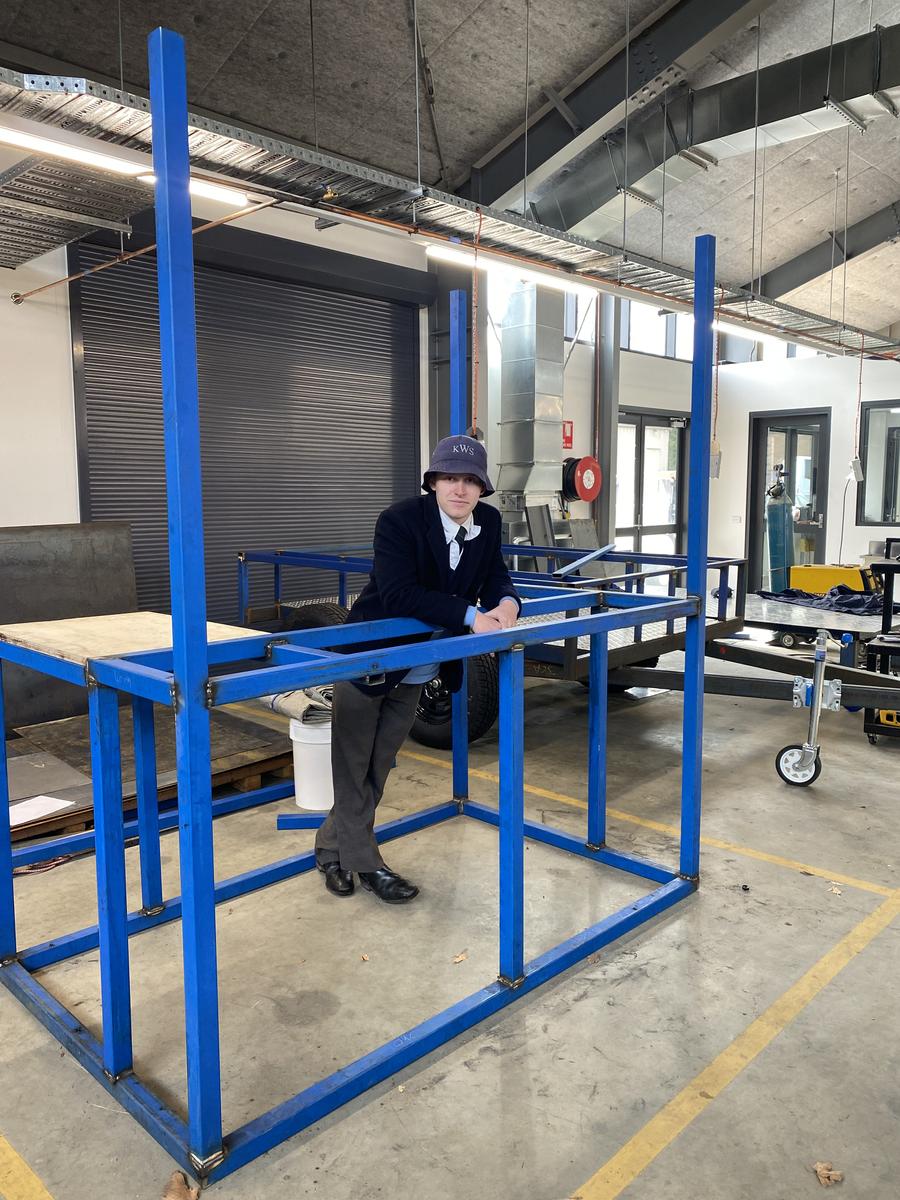


Y11 Reading to Write assessment
Phoebe Gordon
A Lamb’s Bleat
The mattress smelt of mould, the stain was dark and today was cereal day. His knees dug into the springs, and he clutched his arms to his chest beneath him. The blanket, tucked over his head, blurred the form of the stain, but he knew it from memory.
It was the shape of a baby sheep.
No, a lamb.
The boy traced the outline, a sticky, toddler finger prodding the bare padding. He closed his eyes, and imagined stroking the lamb’s soft ears. It licked his hand playfully. He imagined this lamb squeaking, like the rats under the sink.
Is that what lambs sound like?
In the distance, some deep voices hollered at each other, a dog barking at the sound of aggression. Metal garbage-cans reverberated in the scuffle. He wondered if they’d make the bang noise too. But that didn’t matter. He was here, safe with his lamb.
A flimsy laugh came muffled through the blanket. Ma was home. Throwing off the blanket, he sat up, and coughed from the musty air. The boards creaked as he jumped onto the floor, in the way that little kids tend to over-emphasise all their actions – the leap was only off an unadorned mattress askew in the room. A splinter pricked his big toe, poking out from the holes in his socks, but that didn’t matter. Ma would have cereal.
He heard her stumble on something on the floor.
“All thi’ crud. Dad-gammit if I don’t break my backside one-o-these days.”
Her voice was nasal, and croaky, like the cars that sometimes spluttered by his window in the night. The boy reached the doorway and stood still, watching her – who would she be today? Slats of grimy morning light patterned the floor at her feet, filtering through the boards across the window. Her ragged hair hung over her face, and she twisted a plastic bag repeatedly in her hands. Eagerly.
One look, and he knew. This was the Other Ma. He stifled his excitement, lowered his head and looked down. In a second, he was withholding; indifferent. She didn’t seem to notice him, as she put the bag on the small table and crouched over it. Ma scratched at the red marks on her arms with broken fingernails. Flies buzzed around the trashed room, near the cupboard. He knew there was nothing in there – apart from an empty jar of marshmallow fluff, the one with the sheep logo on it.
His stomach groaned.
In the wind, the front door creaked. Ma looked up, paranoid, and stuffed the bag under the couch. The duct-tape on the rips was peeling off the fabric. It was only then that she saw him.
“Baaaby.” She smelt like smoke. “Come o’er here.”
He rubbed the dirt and snot on his nose. The boy walked over nonchalantly, and she wrapped her bony arms around him and pulled him onto her lap. Her teeth were overboiled egg-white. There was a needle on the floor.
“Ma?” She didn’t reply. Had she fallen asleep?
After a bit: “Alright, bit o’ me time now. Go back to bed.”
She turned back to the table, forcing him to fall off her lap.
“But I’m hungie, Ma.”
With her back still turned, she grunted, and reached into the plastic bag, chucking a crumpled bag of chips onto the floor. He snatched it up – but where was the cereal?
“Ma, I ain’t got the wabbit yet.”
She stiffened.
He slid off, shuffling over to a row of collectable cereal charms lined up neatly on the kitchen shelf. He indicated a blank position on the end.
“I ain’t got the wabbit yet.”
Eyebrows clenched above her cloudy eyes. She slurred her words.
“What’re you gettin’ at, boy?” She stood abruptly. Frowned. As happens sometimes, a moment settled and hovered and remained for much more than a moment. And sound stopped and movement stopped for much, much more than a moment. He had gone too far; Other Ma was angry.
“You thunk I ‘ave time to care ‘bout your toys? I just’ bout busted my backside getting them crisps for you!”
He shrank inwards, cringing like a torch was being thrust in his eyes. The boy squirmed, but she had grabbed his wrist. Her breath smelt sweet, smoky, moist on his cheek.
She murmured incoherently. And pushing him away, she dismissed him – and he scooted.
To.
His.
Lamb.
And it was under those blankets that tears traced his cheeks. Far away, he could hear the morning school bus pulling in outside, all the teenagers laughing their ‘wassups’ and ‘did you see the match?’. They would have the rabbit figure; he was sure of it. He wondered what kind of day it was outside – the sky grey like the fuzzy static of the shopping channel, or windy, with the leaves shaking in fright? The lamb was there, now, blinking delicate eyelashes of comfort. Ma hacked in the living room; she wouldn’t wake until night.
But it didn’t matter.
Here, he was away. Hidden. Safe.


“As happens sometimes, a moment settled and hovered and remained for much more than a moment. And sound stopped and movement stopped for much, much more than a moment.”
Reflection
Through the 1937 novella, ‘Of Mice and Men’ (OMAM), Steinbeck portrays the intrinsic needs of humanity through showing that simple hopes and dreams can provide individuals with a mental respite from loneliness. In my literary fragment, ‘A Lamb’s Bleat’, I was able to convey this theme through the isolation of a child, married with the idea of imagination and a childlike fascination of animals. I aimed to generalise destitution in our society, and highlight the negligence and reactions of humans when under pressure. Numerous literary techniques similar to those in OMAM allowed me to create depth in my fragment.
In OMAM, biblical allusion is relied upon as a central theme, and I also employed this to characterise my protagonist. The title, ‘A Lamb’s Bleat’, directly relates to a Biblical ‘lamb’ motif, which ‘the boy’ specifically formulates from a basic object because of solitude and poverty. This connotes to youth, innocence and purity, while also foreshadowing with the more fatalistic idiom of a ‘lamb to the slaughter’. Extreme isolation conflicts with a yearning for belonging; sadly, this is often ubiquitous in humanity, particularly among the helpless. Comparably, allusion is used in parallel in OMAM, where Steinbeck references the biblical account of ‘Cain and Abel’, and the ensuing question ‘Am I my brother’s keeper?’ This resembles the very essence of George’s pity to Lennie, and cements the universality of loneliness.
Steinbeck uses vernacular language to create a sense of authenticity, as basing his text in America allows the inclusion of ‘rabbits’ to specifically represent prosperity. I similarly utilised the colloquialism of certain words to set the scene and give the characters personality. ‘Wabbit’ displays the boys age, and is coupled with the Southern eye dialect of his Ma; ‘Baaaby’ shows her lazy enunciation and disregard. In OMAM, Lennie is obsessed with ‘tending the rabbits’ and ‘living on the fatta the lan’. I used this focus on trivial items to show the fundamental hopes and dreams for contentedness. In my fragment, I used a collectable ‘cereal rabbit’, to represent the boys naïve wish for a better life, ‘they would have the rabbit figure; he was sure of it’.
Throughout Steinbeck’s novella, imagery is applied to craft the mood of the setting, and consequently symbolise elements of society. At the beginning, a lexicon of adjectives describe the scene, ‘warm’ and ‘golden’ versus ‘unpainted’ and ‘whitewashed’ to emphasise uncertainty. This is a testimony to an aspect of human nature; when in an unpredictable environment, we tend to take this out on others, just as Curley took his rage out on Lennie. In my fragment, I represented similar juxtaposing atmospheres by implying his bed is ‘safe’ and the living room is ‘musty, ‘unadorned’ and ‘trashed’, and that his ‘Ma’ in a precarious position, taking this out on her son, which mirrors the circumstances of Curley and Lennie.
The picture above most influenced me, as the idea of ‘light in the dark’ appeared profound. I hyperbolically expanded this, to create a scene of severe loneliness and unnamed desperation. The stimulus quote was used antithetically to its use in OMAM - in ‘A Lamb’s Bleat’, time stops out of fear rather than tranquillity. I used it to capture a feeling of raw abandonment and isolation and the innate way humans intrinsically long for companionship and acceptance.
From Mr Andrew Orme-Smith, Head of Visual Arts
On Thursday the Year 7 students doing Visual Arts had the opportunity to visit the Orange Regional Gallery. The aim of the excursion was to introduce those who seldom go to a gallery to the pleasures and insights offered by our wonderful Regional Galleries in NSW. It is also hoped that this would encourage students to visit at other times with their parents as it can be an excellent family activity.
It turned out that many students did not realize that the gallery is free to visit, much like a library, and the feedback at the end of the visit was extremely positive. The director, Bradley Hammond, took the time to personally run a drawing activity and then introduce everyone to the extraordinary and poignant work of South African artist William Kentridge. His anti-Apartheid work takes on the absurdity of all authoritarian regimes, with the “I am not Me, the Horse is not Mine” exhibition critiquing Stalinist Russia at a time when authoritarian Russia is again causing misery across the world. It was a wonderful example of Art responding to issues, and communicating to an audience.
The students also had the amazing experience of having Steve Lopez, a celebrated Australian painter, take a tour around his retrospective exhibition currently on show. He was very generous with sharing his experiences as an artist over 30 years of travel, insight and hard work. A highlight for me was two minutes of collective silence staring at one of Lopez’ works followed by thoughtful questions and interpretations offered by the students.
Those attending this exhibition cannot thank the Orange Regional Gallery and its wonderful staff for making us so welcome, and especially Cecily Knowles who arranged for Steve Lopez to be present for our immense benefit. For anyone reading this who can get to the gallery, please do so regularly; it is an amazing resource and experience for us to share.

